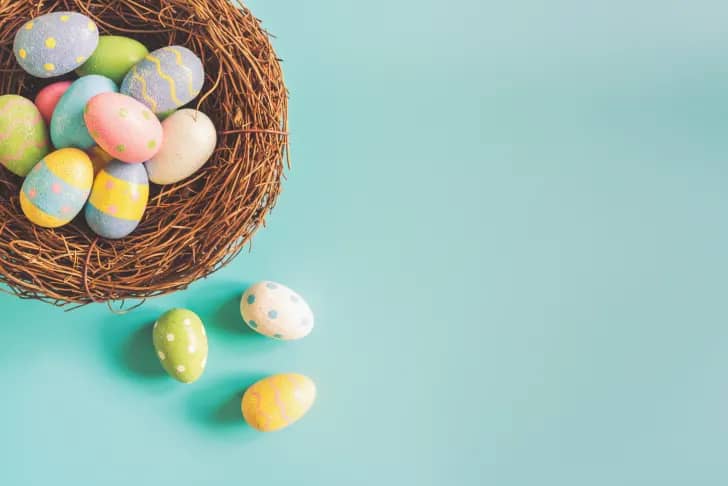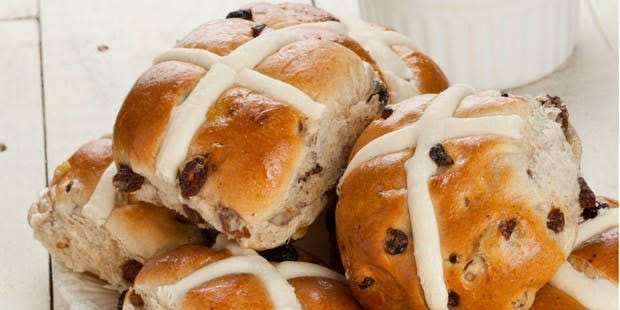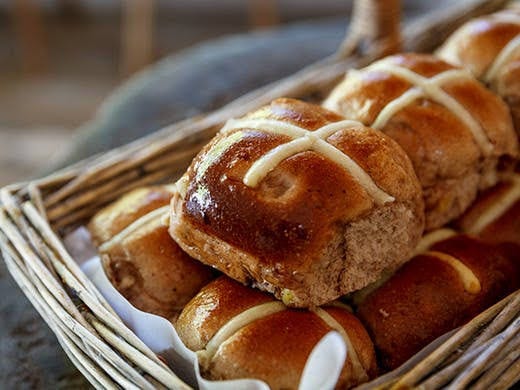So, yesterday was Easter Sunday and most if not all Easter Holidays and celebration cards or artwork your eyes came across somehow seemed to either have an image of a rabbit (bunny), eggs, nest or even chocolate Hot Cross buns on them. So, if you just like me, have been wondering what a bunny has got to do with Easter, well; this is for you and me. After a deep research and online reading session online last night, I was able to find out the following facts, myths and truth about all these famous global Easter traditions surrounding the holy day of celebrating the risen Lord.

We would all agree; Easter is by far one of the most important Christian festivals of the year – it’s when Christians celebrate the resurrection of Jesus Christ. The Bible says that Christ died on the cross on a day called Good Friday. According to the Bible, Jesus was then resurrected and came back to life on Easter Sunday.
Easter is usually on different dates each year, between 21st March and 25th April. Many Christians usually spend time at church in thought, prayer and celebration of Jesus Christ’s life, and may get together with friends and family for a special meal later on in the day.
Due to the coronavirus pandemic however, this year the celebrations took a different wave since churches were closed, meaning there would be no room for Christians and other celebrants to converge and have a mega celebration about the resurrection.
Here are some modern traditions to mark Easter which are very common, they include: Easter eggs, the Easter bunny and Chocolate Hot Cross buns. The inclusion of rabbits and eggs in the celebration of Easter is a combination of paganism, religious superstition, and practicality as we shall find out as we read ahead.

You could be asking yourself; where do these modern traditions come from? Why do we have Easter eggs? Here’s each tradition broken down:
The Easter egg(s)

Since rabbits are mammals (and thus give birth to live young ones), you might be pondering about why exactly the Easter Bunny is said to lay eggs on the holiday. The answer may be as simple as the fact that eggs, like the rabbit, have long been an ancient symbol of fertility, rebirth, and new life — all things associated with the celebration of Easter!
From a Christian perspective, eggs for Easter are said to represent Jesus’ resurrection and his emergence from the tomb. The tradition of decorating eggs for Easter dates back to the 13th century, when eggs were traditionally a forbidden food and not allowed to be consumed during the Lent season or even during the week leading up to Easter (known as the Holy Week); a directive by the church leaders, which is why people would decorate them as the fasting period came to an end, and then eat them as a way to celebrate Easter Sunday.
It is now a worldwide custom to buy Chocolate eggs during the annual Christian event. The first Chocolate eggs appeared in France and Germany in the 19th Century, but they were bitter and hard. As Chocolate-making techniques improved, hollow eggs like the ones of today were developed.
The hollow center was a symbol of Jesus’ empty tomb. According to the Bible, the Son of God’s body was laid out in the tomb after crucifixion. Scriptures state that when the stone covering the entrance was moved, Jesus’ body was missing, and people soon found that he had risen. Because of this, eggs are also seen as a sign of rebirth.
Also, one ancient tradition was the staining of Easter eggs with the color red “in memory of the blood of Christ, shed as at that time of his crucifixion.”
So, any eggs laid that week were saved and decorated to make them Holy Week eggs, that were then given to children as gifts.
What’s with the Easter Bunny then?
Surprisingly, there’s a lot of history behind the mythical story of an egg-bearing rabbit on Easter Sunday (and it’s not just because its cute!). The Easter Bunny actually has a long and deeply rooted history in the Christian holiday — and even in pagan traditions. Here’s what to know about the fascinating origins of the Easter Bunny, and how he became such a beloved symbol of the holiday over the years.
Among other Easter traditions like hot cross buns and egg hunts, the Easter Bunny has long been a well-known and popular symbol associated with the religious holiday. The story of the Easter Bunny is thought to have become common in the 19th Century. Rabbits usually give birth to a big litter of babies (called kittens), so they became a symbol of new life.
Legend has it that the Easter Bunny lays, decorates and hides eggs as they are also a symbol of new life.
One theory, is that the symbol of the rabbit stems from the ancient pagan tradition believed to have started the celebration of Easter — the festival of Eostre, which honored the goddess of fertility and spring. Supposedly, the goddess’s animal symbol was a rabbit, which have long traditionally symbolized fertility due to their high reproduction rates. As Christianity spread throughout Europe, the celebrations around the vernal equinox may have merged with the observance of Christ’s resurrection, since they both occurred around the same time. Missionaries are said to then have blended pagan traditions with Christian holidays to make the transition smoother, so it is possible that the celebrations of Eostre and the resurrection of Christ became one.
As for how the specific character of the Easter Bunny originated in America, it is reported that it was first introduced in the 1700s by German immigrants in Pennsylvania, who reportedly brought over their tradition of an egg-laying hare named “Osterhase” or “Oschter Haws.” As the story goes, the rabbit would lay colorful eggs as gifts to children who were good (at their best behavior)— so the kids would make nests in which the bunny could leave his eggs, and would even sometimes leave out carrots in case the hare got hungry as he got hungry from all his hopping.
Eventually, the custom spread across America to become a widespread Easter tradition — and over time, the fabled bunny’s delivery even expanded from just eggs to include other treats such as Chocolate Hot Cross buns and toys; and the bunny; similar to Santa Claus, the ‘Easter Hare’ played the role of a judge, deciding whether children were good or bad at the start of the season of Eastertide and deserved to receive rewards.
However, while it is tricky to note the exact origin of the rabbit as an Easter symbol, many scholars believe it comes from pagan rituals.
The third and final Easter symbol are the Hot cross buns: Why do people then have hot cross buns at Easter?

While hot cross buns are available throughout the year nowadays, the spiced sweet buns had previously only been available around Easter. The meal is traditionally eaten on Good Friday in the UK, Australia, Canada, Ireland, New Zealand, South Africa and some parts of America.

The buns mark the end of Lent, and the different areas of the bun have a certain meaning, including the cross-representing Jesus’ crucifixion, and the spices inside symbolizing the spices used to embalm him at his burial.
Whether it was pagan or Christian associations with the rabbit that ultimately influenced the Germans, we may never know. But one thing is certain: The Easter Bunny will continue to bring joy and excitement to children across the country every Easter Sunday.
Now that, we’ve together demystified the symbols of Easter, allow me share with you some of my favorite Easter greetings cards and artwork by five outstanding brands; just to paint for you a picture of what I was talking about in the introductory paragraph of this piece.




